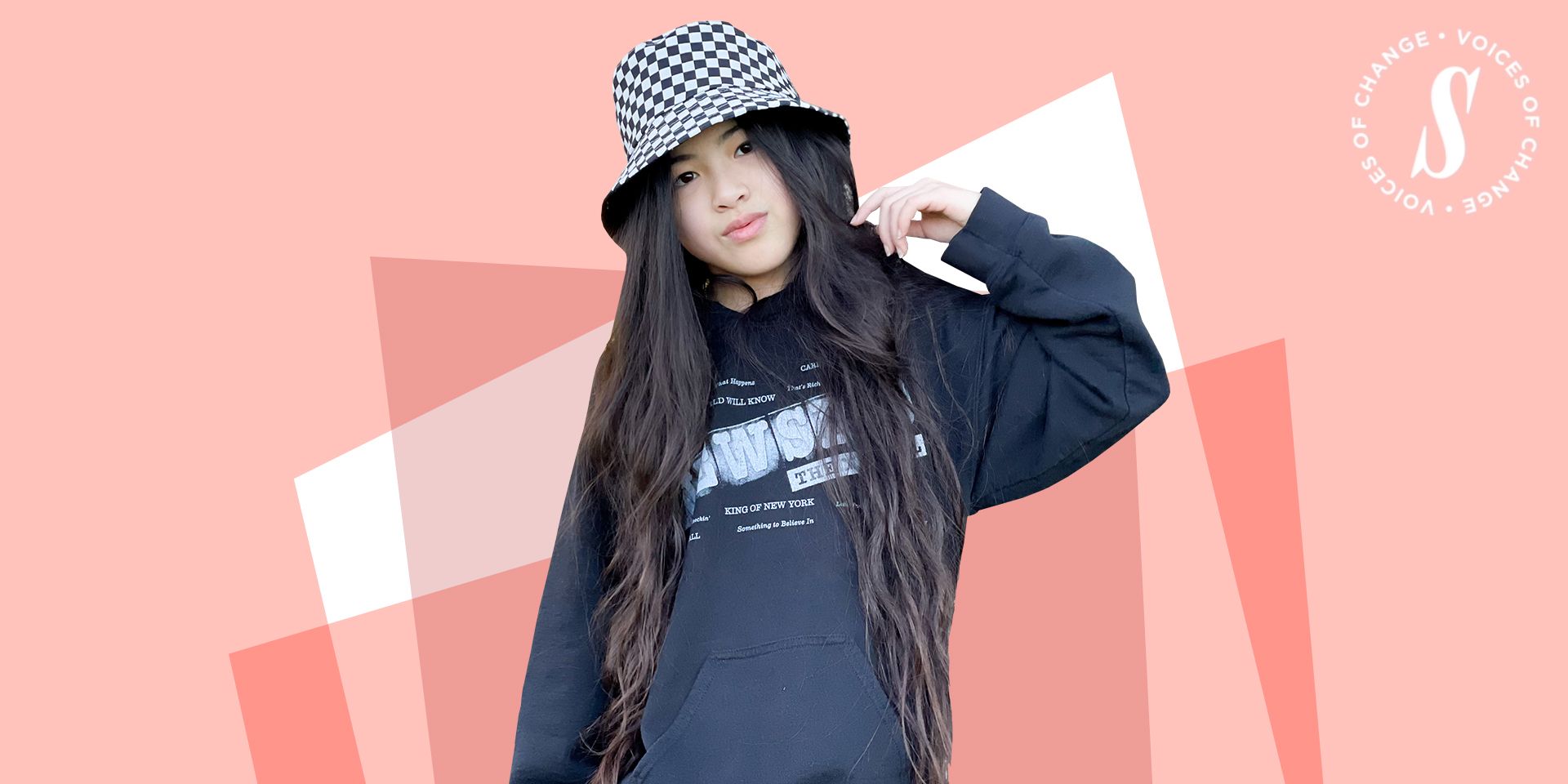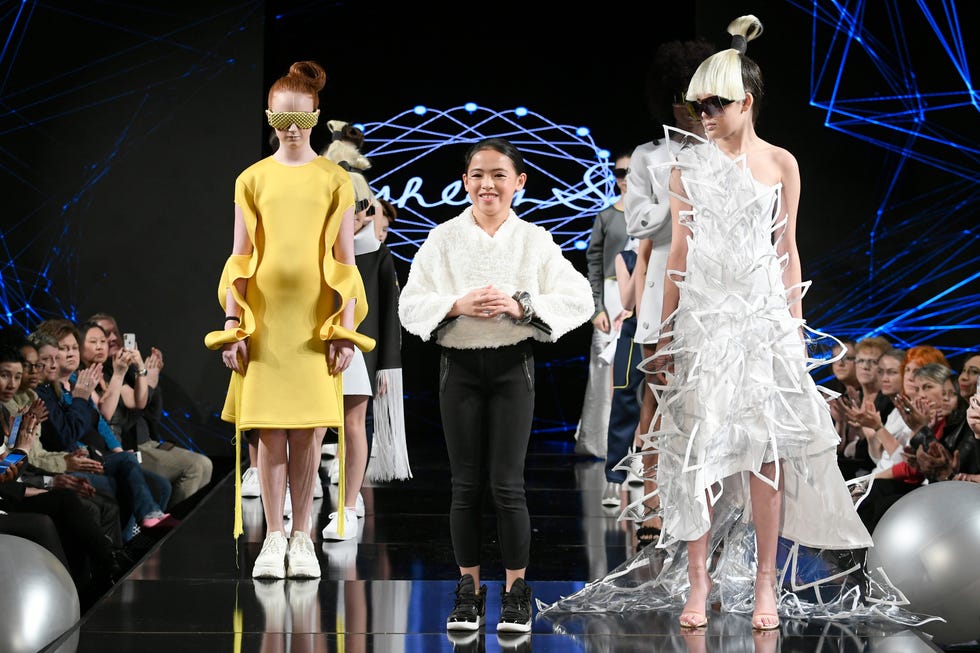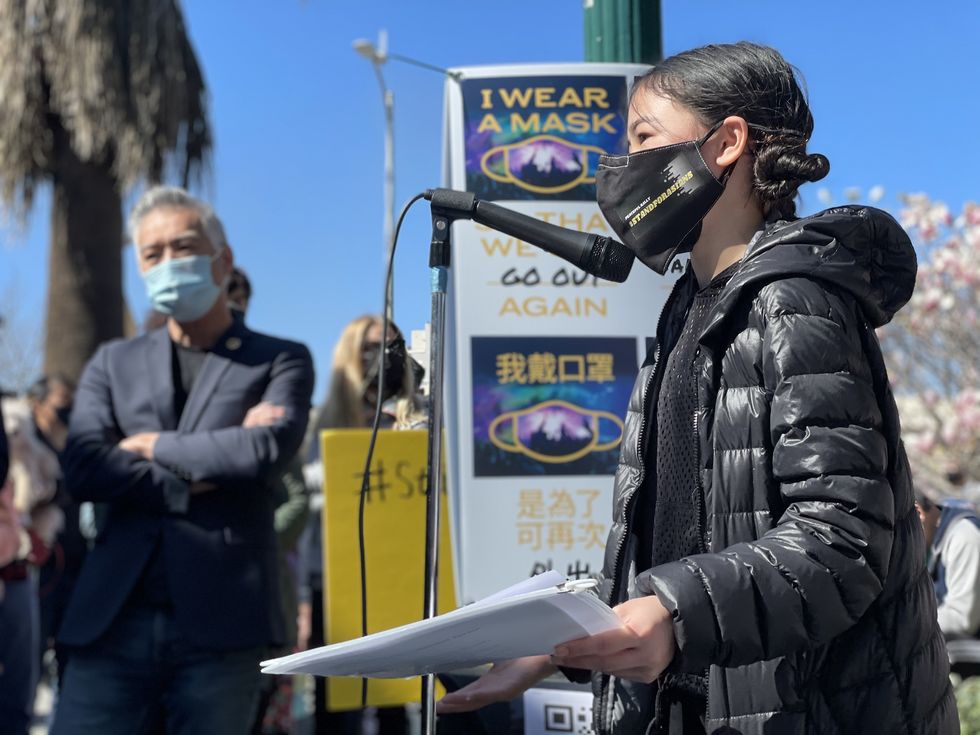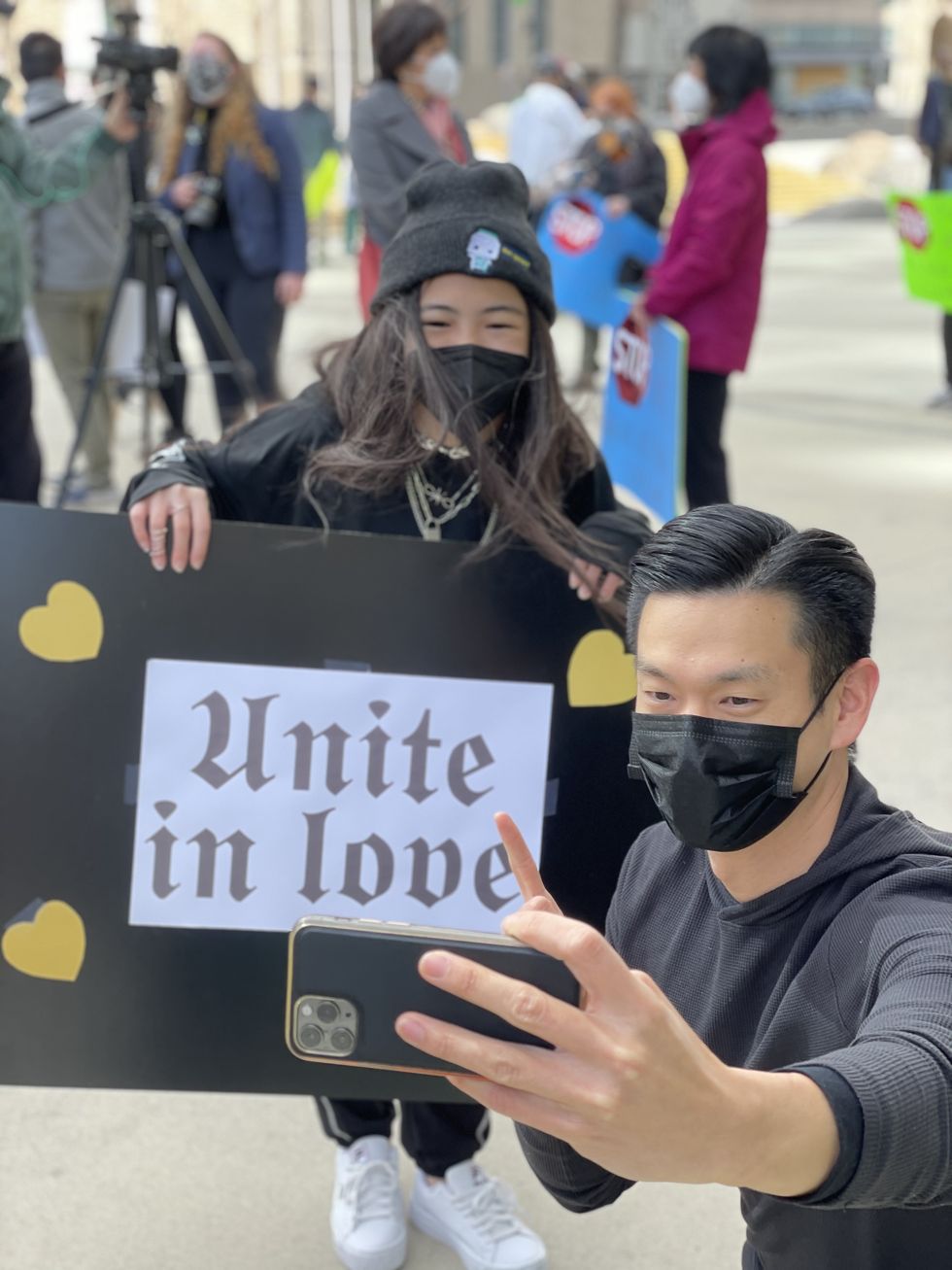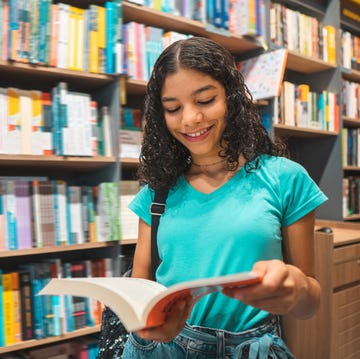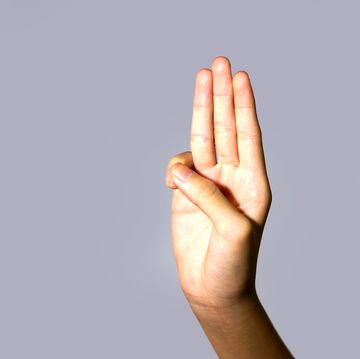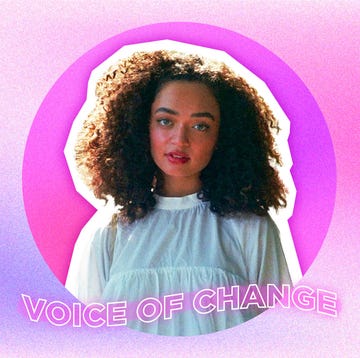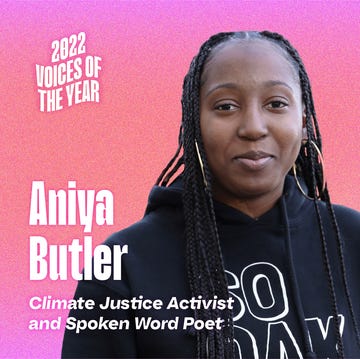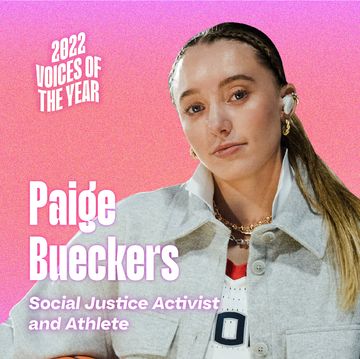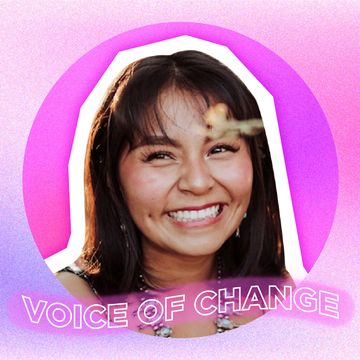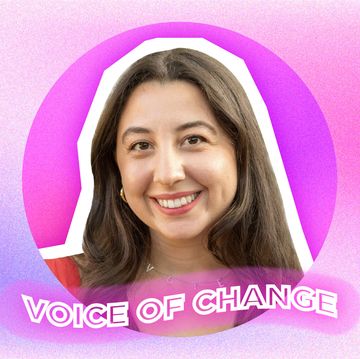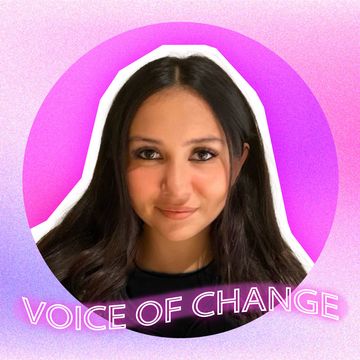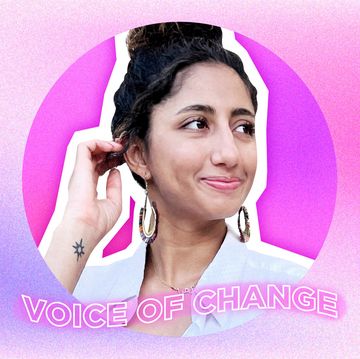Even during the most challenging times in history, it's important to highlight those who are continuing to follow their dreams and take strides to make the world a better place. Because of that, each month, Seventeen is honoring one young person as a Voice of Change, someone who is making a difference in their community and the world at large.
Ashlyn So is proving that activism has no age limit. At 13, she has already made a name for herself in the Stop Asian Hate movement, organizing rallies and speaking at events. Living in the Peninsula in California means Ashlyn is surrounded by many of the Asian hate crimes that have been plaguing our country over the past year. According to a report by Stop AAPI Hate, 3,795 Asian-based hate incidents have been reported to their center between March 2020 and February 2021. Of those, 44.56% occurred in California. Ashlyn watched as more and more Asian elders were attacked on the streets of her home state, but it was Vichar Ratanapakdee's death that was the tipping point for her, says Ashlyn's mother, Angela Wu. Vichar, an 84-year-old immigrant from Thailand was violently shoved to the ground while walking in Anza Vista, California. He experienced brain hemorrhaging from the attack and died as a result of the assault. Vichar turned out to be a friend of a friend's father, and Angela and Ashlyn have been in touch with his family since the attack.
It was the sadness and anger over that event that lead Ashlyn to organize a rally on February 27th. Ashlyn estimates over 300 people gathered at San Mateo Central Park in San Mateo, California where Ashlyn spoke publicly, something that didn't come easy to her. "I used to be extremely shy and maybe sometimes I still am," she said. "But this situation has given me a surge of energy. I saw what was going on and I knew I had to say something about it. I could no longer be quiet."
The San Mateo rally was just the beginning. Since then, Ashlyn has spoken at rallies in both San Jose and Berkley about the importance of raising awareness and standing up for the AAPI community. She has also started a petition—which has garnered over 300 signatures so far—to include Asian American history in the school curriculum, first in the San Fransisco Bay Area, and then, eventually, in schools across the country.
And all of that isn't even mentioning Ashlyn's success as a fashion designer. She has already showed at New York Fashion Week twice and is currently working on a new collection and merchandise line that will intersect her love for design and activism. It is because of all of this and more that Ashlyn is being honored as one of Seventeen's Voices of Change.
17: How did you initially get into design?
Ashlyn So: When I was in preschool, I went to a Montessori school where we learned to sew small things like ornaments and stuffed animals. Later, when I was six, I wanted to start sewing again so my mom enrolled me in a sewing class and I absolutely loved it. I started making clothes on my own at home and I've been to three fashion weeks now.
17: How did you end up at New York Fashion Week?
AS: My first fashion week was in Texas with KidFash Magazine. Then, the last two were in New York when I was 9 and 12. It was really amazing. I was able to see one of my favorite designers there, Kentaro Kameyama, the winner of the last season of Project Runway. I watched his show and it was amazing.
17: How has your design style changed through the years?
AS: When I was really young, I had more of a colorful style. Now, I like more avant-garde looks, black and white, structural things.
17: What is your goal when it comes to design?
AS: Right now, I really want to combine my activism and fashion design. I'm working on merch that does just that. I'm also designing a collection right now for after the pandemic. I really want my designs to be a form activism. So, the new collection is going to represent an abstract idea of all of us coming together as a community to fight against racism and standing up for Asian Americans.
17: How did you get involved in making masks for frontline workers?
AS: In the beginning of the pandemic, I wanted to contribute to the community with what I knew about fashion. I knew there was a shortage of masks at the time and I saw that people were helping by sewing their own. So, we were able to get a pattern from one of the hospitals and we ended up making over 500 masks for frontline workers and community people. Most of them ended up going to doctors and nurses in New York, as well as some construction workers who were working at the time.
17: How did you first get involved in the fight against AAPI hate?
AS: I first got involved in the movement when I saw an Asian elder getting pushed on the news. I was beyond petrified and I knew right away I had to do something about it. I had to stop it from happening again. Since, I am still in school, I wanted to educate other students about this too. So, I told my mom I wanted to do a rally and we planned it in a week. It got really big and word started to spread. In the end, I think over 300 people attended the event. I had no idea so many people were coming and it was amazing to see so many people in support of this cause.
17: Did you speak at the event?
AS: I did. I also got other community members and some of the vice-mayors and council members to speak. My family friend, who is a survivor of a violent attack also spoke and told her story.
17: You describe yourself as shy, how did you overcome that to speak in front of all of those people?
AS: I used to be extremely shy and sometimes I still am, but this situation has given me a surge of energy. I saw what was going on and I knew I had to say something about it. I could no longer be quiet. Most Asians were raised to be quiet, that's what our culture teaches us. But now it's time to finally speak out. I figured since I have a voice, I have to use it.
17: What else do you have planned when it comes to your activism?
AS: I have a lot of things going on right now. I'm thinking of making a petition so schools can add Asian American history into their curriculum and not just as an extra ethnic studies. Asian American history is part of American history. The Chinese Exclusion Act and the [Transcontinental] Railroad workers, it all occurred here and it's important for us to learn about it in schools.
Editor's note: Ashlyn has since started a petition with the goal to include Asian American history in schools' curriculums and teach teachers about Asian hate so it is not perpetuated in schools. You can sign her petition here.
17: What advice do you have for other people your age?
AS: I would say, if you want to do something, if you're passionate about a cause, do it. Use the voice you were given to help those who are quiet. Educate others, educate your classmates. I think my main message is to inspire, motivate and empower the youth to find a cause that they're so passionate about and stand up for it.
17: What does being a Voice of Change mean to you?
I think it means using the voice you're given to change how society and culture have been for so long. It's not time to be quiet, it's time to say something. A lot of people in the Asian community tend to be quiet because it's part of our culture to not say anything, to not cause trouble, but I think being a Voice of Change means we don't have to be quiet, we can cause trouble.
Parts of this interview has been edited and condensed for clarity.
Carolyn Twersky is an associate editor for Seventeen covering celebrities, entertainment, politics, trends, and health. On her off time, she's probably watching Ru Paul's Drag Race, traversing NYC for the best donuts, or, most likely, enjoying time in her favorite place in the world: her bed.
